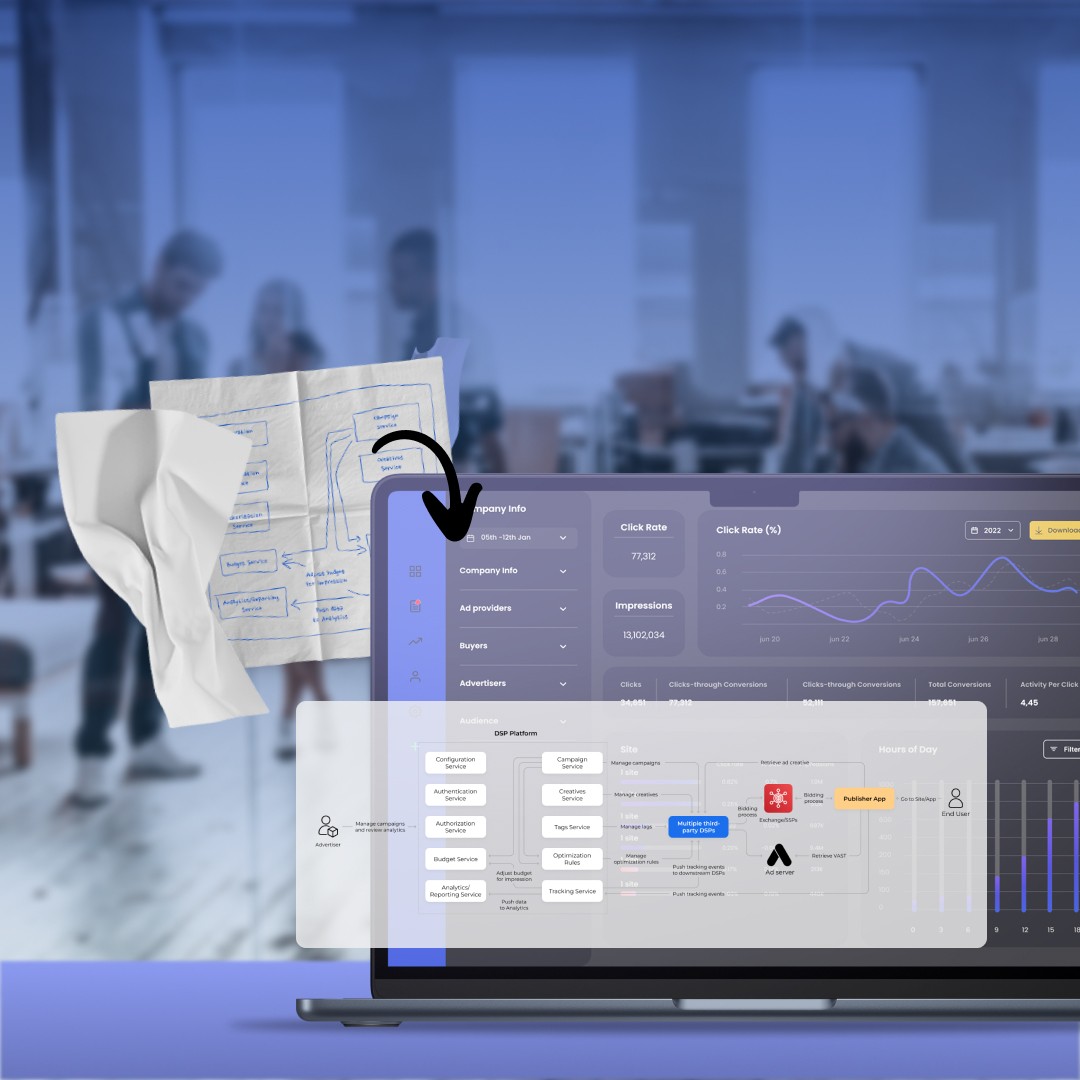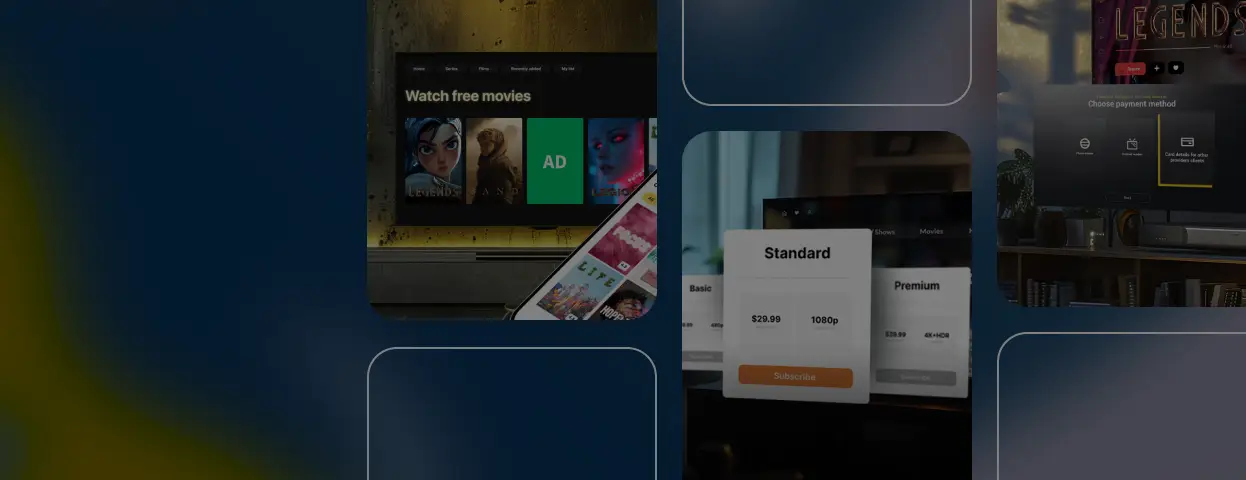A measly market share of 0.4% in Latin America has been keeping a computer and phone hardware business on their toes for about a year. At top of mind has to be what is needed to spark the interest of the region in the brand and grasp customers’ attention.
A European digital communication company is sick and tired of catching up with competitors — overtaking them is a goal. As one of the bargaining chips might be an engaging ad, it should hit the mark and leave no chance for a mobile user to pass by.
What do these brands have in common? This is the willingness to customize ads according to consumers’ wants, needs, or online behavior complemented with adding value to them in the shortest time span.
And here lies the strong suit of programmatic advertising and RTB as a means of purchasing ad inventory — the ability to instantly give a user a valid message, service, and product.
Programmatic advertising: the essence of the concept
Programmatic advertising stands for automatic buying of an online advertising space, as opposed to doing business directly with publishers. This advertising method is characterized by streamlined ad delivery and leveraging data-driven approaches to maximize an ad’s reach.
Programmatic advertising market is growing from about $6 billion in 2021 to over $7.3 billion in 2022, as per Programmatic Advertising Global Market Report 2022. Long-term forecasts are even more promising — by 2026, it’s likely to reach over $18.4 billion, with CAGR of 25.67%, and for good reason.
A wider reach for advertisers thanks to the support of various ad formats and channels, data-driven insights vital for the real-time ad campaign optimization or ensuring better ad relevance, and significant time savings via automating and structuring drawn-out negotiation and transaction processes form only a tiny part of what programmatic ad has to offer.
What makes up a programmatic advertising ecosystem?
While its cornerstone is high quality data about the existing consumers and prospects, which paves the way to the efficient targeting scenarios, the concept also can’t do without the software to manage the ad buying and selling procedures and take care of the lightning-fast digital ad placement.
The primary software components commonly involved in the digital ad framework sound as follows:
- Supply-side platforms, aka SSPs
When a publisher intends to introduce, manage, and sell a portion of digital advertising inventory, SSPs come into play. An SSP proceeds with monetizing the ad space and tracking the ad inventory. - Demand-side platforms (DSPs)
Demand-side platforms serve the best interests of marketers whose goal is to get through to the target audience thanks to the data about their age, location areas, behavior, and more, while minimizing their ad expenses. - Ad exchanges
These are tech platforms, so-called trade floors, responsible for processing bid requests and responses as well as streamlining buying and selling of digital advertising. - Data management platforms, or DMPs
What is indicated as a tool responsible for making a perfect tandem of an ad space requested by an advertiser and ad inventory available for it? It’s a data management platform, the independent solution designed to aggregate, store, and analyze all types of data, including customer and marketing, from various sources, for more efficient targeting.

Programmatic Ecosystem
Another pivotal aspect that still remains in the shadows is, “What are the possible ways to purchase advertising inventory?” Programmatic implicates several buying models, according to which advertisers can gain an ad placement. Let’s look at these options.
How we can help
Want to unveil all programmatic advertising powers to speed up ad buying or selling?
How to acquire ad inventory?
Option 1. Programmatic direct
As is clear from the term, a deal is carried out on the basis of the direct agreement between an advertiser and a publisher. The transaction is considered programmatic, since it’s facilitated with an automated system.
Option 2. Private marketplaces
Privileged parties, invite-only access to inventory, auctions with starting prices set in advance, first-class inventory offerings — this is all about the interaction between buyers and sellers within the deal.
Option 3. Real-time bidding (RTB)
As the name suggests, the bids are immediately placed by advertisers and the ads themselves are purchased throughout the automated auction. Whereas several buyers at once are free to compete in a tender for a single ad impression, the end user will see only the ad provided by the buyer with a whopping bid.
How RTB works: a step-by-step process
Step 1. It all starts with an advertiser who intends to make a bid. After their ad campaigns appear in a DSP and some ad spaces are available, a bid request goes to an ad exchange through an SSP.
Step 2. The ad exchange monitors ad spaces via the connection to SSPs.
Step 3. As soon as there are any ad impressions to purchase, the auction between different demand-side platforms begins.
Step 4. DSPs compete in a tender, bidding for the ad impression suggested.
Step 5. The winner is the DSP making the most impressive bid. After a successful bidder is chosen, their ad is shown to end users.

How RTB works
Programmatic vs. real-time bidding
As mentioned previously, RTB is among the most widely-spread methods to place and purchase advertising. If we start exploring the difference between programmatic and real-time bidding, these two terms relate to each other like an entire puzzle and its piece, which highlights that real-time bidding can’t go without programmatic.
And, on the flipside, marketers and publishers have a chance to use alternative scenarios for ad buying and selling accordingly, without being limited by RTB only. But why has real-time bidding received the well-deserved title of a popular bidding method among both parties?
Publishers vote for RTB thanks to:
- The ability to track and amend the prices depending on the bids and demands
- Transparency: knowing their audience and the consumers advertisers are chasing allows publishers to reshape their business strategy, providing tailored offerings
- Advantageous selling of remainder advertising
In the meanwhile, advertisers appreciate that they’re getting more control over their ad campaigns, including ad placement, more precise audience targeting, etc.
Case in point: rearchitecting, functionality optimization, and new features creation for a demand-side platform
Equipped with the AdTech expertise, Oxagile’s team took on the project of rebuilding the DSP architecture to achieve better scalability and performance, enabling an extended set of features, and adding some new from scratch. Our contribution drove the increase in the client base, as the reimagined system architecture and functionality favored the competitive advantage of our customer over other AdTech providers.
Programmatic buying and selling solutions: is there a need to know more?
Whether you are generally interested in programmatic advertising as a means of increasing your brand awareness, exploring programmatic vs. RTB and other AdTech concepts, or challenged by the fierce industry competition and searching for ways to strengthen your current offering, Oxagile is ready to talk and give you further insights into how we can be of service.
























